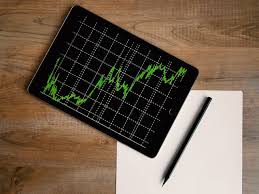Marelize van Zyl – CEO at Aspire Art
In certain quarters, art has become an increasingly attractive alternative investment as part of a diversified portfolio. One of its biggest advantages is that, at the very least, it tends to hold its value and, over time, can increase in value. In the meantime, buyers get to enjoy their acquisitions.
The global art market was valued at US$552 billion in 2024 and is projected to grow to US$585.98 billion in 2025 and US$944.59 billion by 2033, primarily driven by increased sales of artworks, particularly amongst high-net-worth individuals. As the number of high-net-worth individuals rises globally, there is growing demand for art as a viable asset class to include in their investment portfolios alongside traditional assets like stocks, bonds and real estate.
The acquisition of artworks, however, is not only restricted to high-net-worth individuals and aspiring art collectors can acquire more affordable pieces from emerging and up-and-coming artists. When a purchase is made based on sound advice, an investment into a piece of art can reap handsome returns.
The most common mistakes new art collectors make are not knowing the important components that influence the value of an artwork, its provenance and getting expert advice. Naturally, the most important factor is the status of the artist and their biography, as well as the significance of the work within the artist’s repertoire and the social milieu in which it was created. Before acquiring an artwork, it is essential to research the artist, their background, their creative output, what their work stands for and how it has been received – by the general public, the art world and the position of the art market in general.
This is where expert advice from specialists who understand the art market and current trends can make the difference between acquiring a piece that holds its value versus appreciating significantly in value.
For example, in 2012, I sold a stunning still life titled I Love You All the Time by artist Georgina Gratrix for R45 000. The work was from her first solo exhibition in the Cape, a career-defining moment for the young and emerging artist. By 2018, Gratrix’s career had flourished. She had participated in notable museum exhibitions, prestigious residencies and shows across Europe. In addition to holding another major solo exhibition in Cape Town, a seminal book on her work was published and her paintings had become highly sought-after and widely recognised. I encouraged the owner to put the piece up for an Aspire Art auction, where it sold for R591 000, providing a 1,211% return on investment to the seller and setting a new auction record for the artist.
Gratrix is far from the only local artist whose work has seen a significant appreciation in value in recent years. In 2018, an artwork by Lisa Brice (now living in London) sold for R39 000 at auction. In 2023, that same piece sold for R1.2 million at an Aspire Art auction. Another Lisa Brice piece, Adult Show, was sold for R30 000 in 2019 but went on to fetch R364 000 at auction just one year later.
Cinga Samson, a self-taught artist who started painting after joining a shared artist studio, Isibane Creative Arts, in Khayelitsha, Cape Town, is another rising star whose work has appreciated significantly. His breakthrough year was in 2021 with a solo show at the prestigious Perrotin Gallery in New York, being signed by leading contemporary gallery, White Cube, and an exhibition at the FLAG Art Foundation in New York, cementing his international reputation. His works now reach £321,300 at auction. A very early, formative work titled Figure was originally purchased at an exhibition in 2010 for R1 700 before selling at one of our auctions for R240 000 in 2023.
One of my priorities at Aspire Art is to promote the value of women artists’ work, particularly those who have been overlooked historically. In 2024, we put a captivating landscape titled Drought by Gladys Mgudlandlu (1917 – 1979) up for auction with an estimate of R50 000 – R70 000. The piece went on to sell for over R152 425. The owner recalls purchasing the work for very little in the early 90s.
Specialising in 20th-century, modern and contemporary art, Aspire Art curates live and online auctions and an exhibition and private sales programme, as well as offering art valuation and advisory services, helping clients navigate the art market and build meaningful collections.
Each piece that we put up for auction is carefully selected. We conduct detailed research into each artist and the artwork we are putting up for auction, putting effort into highlighting each piece’s historical and cultural significance. Critically, we will never put an artwork up for auction that we’re not prepared to sell again at a later date.
Online art auctions are an effective way to embark on an art collecting journey, offering a good introduction to the art world for new collectors, irrespective of whether they choose to buy a specific artwork or simply use the opportunity to establish what pieces resonate with them aesthetically. To make art collecting more accessible to more buyers, Aspire Art recently introduced a buy now, pay later model which allows buyers to pay off artworks over a three-month period interest free.
During the course of my nearly two decades of experience handling both primary and secondary art markets, I have learned that the key to assisting a client build an art collection is understanding their long-term ambitions. Acquiring an Irma Stern painting is certainly a reliable way to preserve value and hedge your investment. However, high-end purchases like this may take a long time to appreciate significantly in value. Currently the most valuable South African artist, Stern’s paintings sell for an average of around R5 million, with the most expensive selling for £3,044,000 in London in 2011.
Acquiring an artwork from emerging talents, on the other hand, will be significantly more affordable, but does come with a degree of uncertainty in terms of how much their work will appreciate in value over time. When it comes to art collecting, it takes experience and insight to recognise emerging talent – and a healthy dose of luck – which is why expert advice is always a good idea.
Art collecting is essentially about patience: an art collection is not built up overnight and it does not always appreciate in value quickly. Instead, regard it as a passion project that has the potential to be a lucrative investment if you have bought carefully.

It’s a buyer’s market right now which means there has never been a better time to start collecting art. This environment allows for careful selection, strategic acquisitions and a strong foundation for future appreciation when market conditions shift.
For more information on Aspire Art’s auctions: https://www.aspireart.net/upcoming-auctions




























